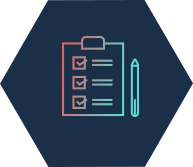3-day Course

Objectives
- Learn how to define a vibration test programme.
- Learn how to interpret the test specifications set by a customer.
- Learn about the different methods of vibration testing (advantages, disadvantages, complementarities).
- Learn the benefits of a calculation approach in a product development cycle (upstream and downstream of testing).

Prerequisites
- Basic knowledge of mathematics and mechanics
AUDIENCE
- Test Engineer
- Design Office Engineer
- Operator
- Industrial Project Leader

Upcoming sessions
- April 6 to 8, 2021
- November 30 to December 2, 2021
PLACE
dB Vib Consulting, Montée de Malissol, 38217 Vienne.
MANAGER
Céline Devémy
Program
Theory
- A few reminders (signal processing, sensor selection, evaluation unit, etc.)
- FFT, characteristics of shakers . . )
- The main tests: sinus, random, shocks…
- Steering strategies
- The outlines of finite element modelling
- Definition of vibration test specifications and dimensions of interface parts
- The comparison between experimental and numerical results and the recalibration of a calculation model
Practice work
- Examples of applications (industrial cases)
- Experiments on shakers
Application form
Register or ask for further information. Personalised training courses can also be provided. The location of the training is subject to change. Training courses can be held at a distance. In this case, the training can be delivered in several short sessions (e.g. 2 hours) via videoconference software, spread over several days, in agreement with the trainer and the participants.
